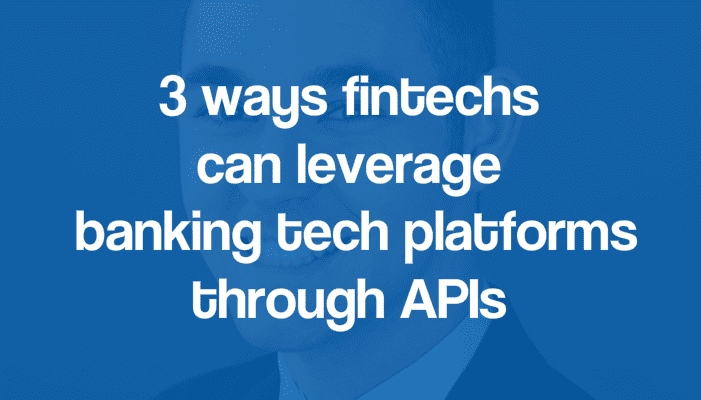Just a few years ago the term “fintech” was almost unheard of; now it dominates conversations in the financial industry. According to a report by Deloitte, Fintech by the numbers, fintech investment is on the rise. In 2017, over $21 billion was raised by fintechs around the globe and almost $8 billion of that came from the United States alone. Interestingly, despite the rise in fintech investment, the actual number of fintechs is decreasing, according to Deloitte. This is often a sign of market consolidation as the market becomes more competitive. As is often the case in competitive market situations like this, finding points of differentiation will become even more crucial for fintechs to move forward and achieve success.
An important way for fintechs to achieve differentiation is through partnerships with other financial institutions and technology companies. These partnerships offer new ways to reach and interact with intended target audiences. One common form of partnership is integrating with a banking platform via an API. APIs give fintechs a unique way to pull data from a different source into one easy-to-use interface. In a recent article, Sunil Mishra of Infosys Ltd wrote that, “digital businesses, such as Fintech firms and ecommerce companies, are also a good target [for banks to consider partnering with] because they are always looking for APIs on which they can build new, better experiences. Progressive banks are setting up API stores and are exposing their APIs for these clients to use.”
There are a few different examples of this type of partnership already occurring in the marketplace. One is Macquarie, an Australian-based bank that has utilized this concept to open up the opportunity for third party fintechs to add functionality, such as budgeting apps and accounting software, to its platform for the bank’s customers. The third party fintechs will have to meet certain security and quality standards, but will gain key advantages over competitors using this model. Sageworks has a similar open API model in place, but instead of solely seeking fintechs to improve the B2C experience, the technology firm’s focus is on making it easier for banks to connect a variety of data sources and solutions on a single interface through the API so the bank can grow and improve customer experiences more efficiently. Though they are different in targeting, both uses of APIs strive to achieve the same goal, which is to enhance the experience on their respective platforms by attracting the inventive technology companies.
There are several key ways fintechs can leverage platforms like Macquarie and Sageworks via APIs. It looks like partnerships like this will be a key part of the finance and banking industry in the future.
Here are three key ways these platforms can be leveraged:
1) Obtain unique data
A key to the fintech disruption is the ability to drive the “customer first” mindset in the financial space. Retail has been experiencing serious disruption in recent years and finance is primed for this same trend. A major driver of this customer-centric initiative is data. Having access to the right data set provides ways to create unique inferences that wouldn’t normally be possible. Whether the data consists of financial statements, credit scores or industry benchmarks, it can provide the insights needed to provide the “customer first” service that fintechs are looking for to disrupt the financial industry.
2) Gain access to an established customer base
One of the hardest parts of launching a new product or business is proving that it is something the target audience wants or needs. By partnering with banking platforms and providing additional functionality to an existing audience, fintechs can fine tune their offerings more readily. Use cases and proof of concept beyond a small beta test can be of huge value. Another reason fintechs have gained market share is because of the ability to make manual and time-sensitive processes much easier. The integration with a banking platform would assist fintechs’ mission to improve user experience on an even larger scale by adding their unique functionality to the platform.
3) Establish important and trustworthy relationships
Building the right relationships will be a key to this entire model. Once found, that relationship could be a huge part of success for fintechs in the long run. By working with an established partner, fintechs will have access to the platforms’ marketing resources indirectly as well as gain valuable integration experience. From a marketing perspective, if the fintech is successful, then it could turn into a functionality that the platform provider’s sales team begins to pitch as a differentiator to prospects and customers. Through this, the fintech gains brand awareness as well as goodwill with the platform due to the value it is providing. From an integration standpoint, a huge advantage is experience. Being able to see how the product interacts with various core systems will be invaluable information to market as a strength for the fintech. The partnership could also lead to conference invites, speaking engagements, and other valuable activities for the fintech to leverage.
To summarize, fintech businesses are carving out portions of the value chain, but as the environment continues to become more competitive, every advantage can make a difference. Creating partnerships with platforms is a great way to gain data, reach an established market and solidify valuable industry relationships that could go a long way to helping the fintech succeed in the long term.



































